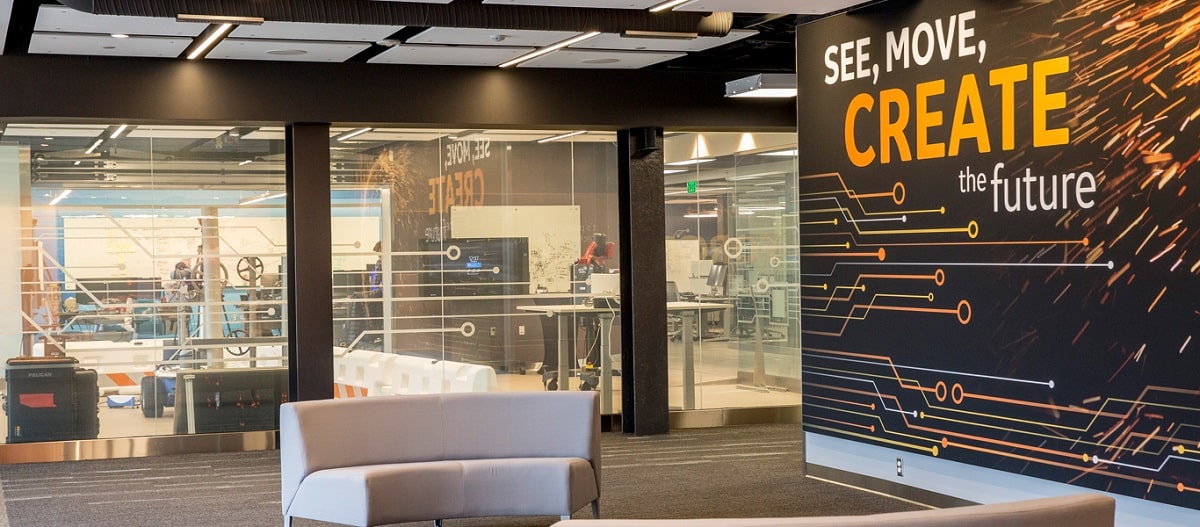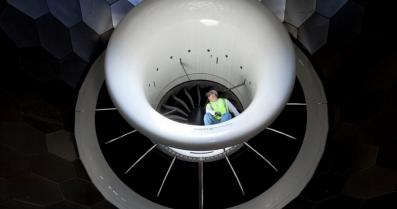With billions of machines connected into the Industrial Internet of Things (IIoT) and quantum computing beginning to enable new possibilities at the Edge, a new “Age of Industrial AI” is underway in earnest. Industrial assets and systems largely managed and operated by humans today will become more intelligent, autonomous and even predictive as new developments in artificial intelligence (AI) are integrated to augment our industrial machines, services and manufacturing processes with dynamic, new capabilities.

In the future, machines will be more engaging partners with humans and with other machines to maximize the value of critical infrastructure that builds, moves and powers the world. Imagine being able to:
- Generate, distribute and consume energy in a carbon-neutral world;
- Optimize air travel to serve millions of more passengers with no delays or disruptions; and
- Empower healthcare providers to deliver precision care to tens of millions of more patients than can be served today.
But the bar to exceed is extremely high. Every step toward enhancing the intelligence, autonomy and capabilities of our machines must be 100% trusted, reliable and secure. It’s striking this unique balance that’s giving rise to a new industrial lexicon of AI technologies and terminology that GE scientists and engineers are at the forefront of defining and shaping.
GE RESEARCH TECHNOLOGY PORTFOLIO
GE Research sits at the nexus of the Cloud and the Edge, physical and digital, and hardware and software, leading a revolution of new AI concepts and developments for the industrial world. Key initiatives include:
Digital Twin
One of the principal ways GE develops and deploys AI is through its world leading Digital Twin technology. Digital Twins are digital models we have created of our industrial assets, parts, manufacturing processes and even systems in which our assets are a part of, to deliver new business value for GE’s businesses and our customers.
AI and machine learning are two key capabilities integrated into our Digital Twin technology that enables data to be collected, analyzed and acted upon to optimize our various products and services. To date, GE has built up a vast catalog of Digital Twins that have created $1.05 billion in value for GE and its customers.
GE Digital Twins live in the Cloud and at the Edge with their given physical assets and systems. This allows both a fleet-level view of thousands, even millions of assets and a view of individual asset and system performance as well across multiple industries. Using AI, we can generate and act on insights from both vantage points to help our customers optimize the maintenance and operations of their systems.
Humble AI
We’re piloting a new form of AI at a wind farm in the United States with dozens of turbines that exhibits the quality of humility. Because wind directions and conditions are constantly changing, the AI algorithms we develop to control the turbines may encounter unfamiliar situations. When they do, these algorithms have been trained to take a step back and relinquish control of the machine into a safe, default mode while it tries to learn and understand the new scenario. It will only resume control once it has a full understanding of the new set of conditions. So far, we have achieved a 1% higher energy output from these AI- driven turbine controls in our pilot studies.
Digital Ghost
We’re using AI to help detect, isolate and neutralize cyber threats against critical industrial infrastructure, such as power plants, and before they can cause harm. Digital Ghost provides an additional layer of security beyond the traditional IT/OT firewalls. It lives in the control systems of machines and uses a network of sensors to detect any conditions that fall outside “normal” operations. If it does, Digital Ghost isolates where the threat is occurring and directs the control system to restore a given machine to normal operating parameters. Currently, the GRC has ongoing programs with the US Department of Energy to develop Digital Ghost cyber protection solutions for wind power generation installations and natural gas systems as well.
Digital MRO
Digital maintenance, repair and overhaul (Digital MRO) is being used to reduce the turnaround time of servicing jet engines. With a fleet of ~70,000 jet engines, GE Aviation’s services portfolio represents one of the largest growth opportunities for the business. One of the keys to growing this portfolio is implementing new digital solutions to improve their capacity for servicing our jet engines. GE researchers are helping by integrating new in-situ inspection and materials technologies with fleet and shop operations to optimize Aviation’s maintenance, repair and overhaul (MRO) enterprise. The Digital MRO is more accurately forecasting when engines will need to be taken off the aircraft, and it is also predicting during engine operation prior to removal the level of component replacement required at the overhaul.
AIRx
AIRx is an AI-based, automated workflow tool for MRI brain scanning that automatically “prescribes” slices to help reduce redundant, manual steps. It uses deep learning algorithms built right into the MRI technologist’s workflow to automatically identify anatomical structures to prescribe the slice locations, and the angle of those slices, for neurological exams, delivering consistent and quantifiable results.
Additive Manufacturing
We’re integrating AI across the entire 3D printing process from part design to the printing and post-processing and inspection of final parts. The aim is to enable the rapid design and validation of new parts and then achieve 100% manufacturing yields in the printing of those parts, using AI to monitor and make any needed corrections on the fly during the building of those parts.
Digital Thread for Design (DT4D)
GE researchers are creating an AI-driven design tool that could cut product design times in half and enable millions more design iterations of a given industrial component to further optimize new designs. How? We’re combining our workflow process knowledge and decades of accumulated data and learnings in aero, thermal and mechanical design and putting it into an AI-driven neural network that can analyze near instantaneously what would otherwise take 10,000 years of supercomputing on 1,000 cores - we call it Digital Thread for Design (DT4D).
E.g. GE researchers trained a surrogate model with about 100 computational models to figure out the optimum shape for the crown of a piston in a diesel engine. What would normally take two days with a team of design experts and supercomputing assets took just 15 minutes with DT4D. Moreover, the model was able to evaluate roughly a million design variations in that timeframe – an increase in speed of 5 billion times. The team was able to achieve a best design of the piston crown that delivered a 7% improvement in fuel efficiency with a “significant” reduction in soot emissions.
Trusted Autonomy
We’re integrating AI, machine learning, and data driven analytics into robotics platforms that can inspect the tiniest crevices inside a jet engine to inspecting the outside of wind towers and blades on a wind farm.
We’re even training and equipping robots to make in situ repairs, such as mini-robot crawler patching a thermal barrier coating on a jet engine part inside the engine.
WHAT’S NEXT
Today, AI has progressed from lines of code to 2nd and 3rd waves of AI involving more integrated and complex neural networks that are enabling deeper learning and insights. This is where GE’s ongoing efforts are concentrated. The 2nd wave is happening today, where industrial data is used to train algorithms to help improve decision-making around how to operate and maintenance industrial products and processes.
The 3rd wave is about adding the human senses of sight, hearing and others that give machines the ability to perceive and interact in decision making more directly with humans. Alexa and Google Home are good examples of consumer 3rd Wave AI applications. A multi-disciplinary group of scientists at GE’s Research are working on several programs to develop and demonstrate AI technologies that enable industrial machines to learn and act creatively on the fly just like people.









